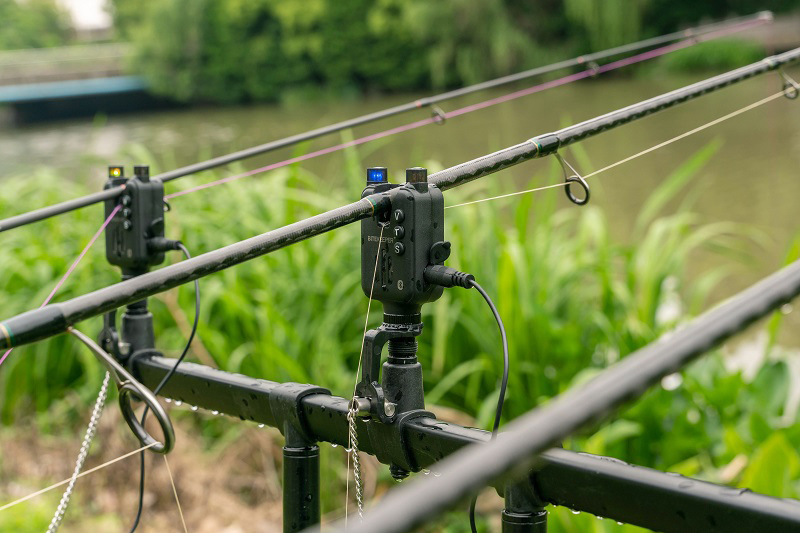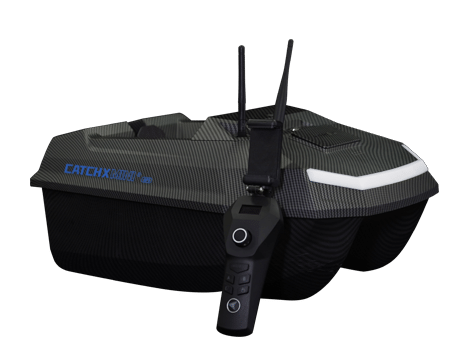How to set up a fishing bait alarm
Fishing is not just a pastime; it's a passion, a pursuit that demands patience, precision, and the right equipment. When it comes to landing those elusive, larger catches, such as carp, a fishing bait alarm becomes an indispensable tool. It acts as your silent partner on the water, alerting you to the slightest nibble with a distinctive beep or vibration. However, optimizing your bait alarm to its fullest potential can be a challenge, especially for those new to the sport. In this article, we'll guide you through essential steps on how to set up your fishing bait alarm and prepare for a successful angling adventure.

Preparing Your Bait Alarm
Before diving into the setup process, there are a few prerequisites you need to check off your list to ensure a seamless experience. These include:
A Pod to Fix the Alarm To: A suitable pod is crucial for securing your bait alarm in place, providing stability during your fishing session.
Batteries for the Alarm: Ensure you have the necessary power source for your alarm to function without interruptions.
Bobbins as Alarm Threads: Use bobbins as your alarm threads, ensuring they are compatible with your equipment for optimal results.
Make sure all of these elements are in sync to avoid any hiccups during your fishing trip.
Bait Alarm Setup Steps
Now, let's move on to the critical setup steps for your fishing bait alarm:
1. Attach the Bobbin: Start by attaching the bobbin to your rod, which will serve as the alarm thread. Make sure it is securely fastened.
2. Fix the Thread: Ensure that the thread is tightly screwed into your rod pod, offering stability and preventing any unwanted movement.
3. Position the Alarm: Set up the bite alarm in a way that it faces away from the water. This may require additional tightening to keep it firmly in place.
4. Thread the Line: Once your fishing line runs through the alarm, make necessary adjustments to the alarm settings to suit your preferences. Avoid overexerting the line to prevent damage.
Alarm Settings for Volume
Every bait alarm relies on sound to alert anglers to potential baits and fish movements. It is essential to optimize the alarm settings, which may include:
Volume Control: Most alarms allow you to control the volume of the signal. It's recommended to set the volume just loud enough for you to hear when you receive a bait. If you're fishing with others in the vicinity, consider the potential for confusion or annoyance due to overlapping alarms. In such cases, investing in a receiver for better signal transmission may be beneficial, especially if you're fishing at a distance.
Choosing the Appropriate Tone
Some bait alarm models offer options to select different tones. This feature can be advantageous in the following scenarios:
Distinguishing Between Anglers: If you're not alone on your fishing trip, using different tones can help you distinguish your setup from others. This prevents confusion when multiple alarms are in use.
Managing Multiple Setups: When using more than one rod, different tones enable you to identify which setup is experiencing activity.
Other Considerations
Apart from alarm settings, several other factors come into play when optimizing your bait alarm for a successful angling experience:
Fishing Line: The type of fishing line you use can impact how your alarm responds to wind and water movement. Stronger lines with higher sensitivity ratings are suitable for detecting fish baits, while lighter lines with lower sensitivity ratings are better for distinguishing fish activity from other factors.
Tackle Weight: The weight of your tackle should match the sensitivity rating. Heavier tackles require a higher sensitivity setting, while lighter tackles need a lower sensitivity rating.
Range: If you're fishing from a distance, consider a higher sensitivity setting, as fish baits may have less impact over long distances.
Environmental Factors: Pay close attention to wind and water movement, as these environmental variables significantly influence bait alarm performance. Adjust your alarm settings to strike the perfect balance.
Setting up your fishing bait alarm is a crucial step in your angling journey. Whether you're targeting elusive carp or other species, having your alarm finely tuned can make all the difference. By following the steps outlined in this article, you can ensure that your bait alarm is primed for action, helping you detect even the subtlest of baits. Remember to consider factors like volume, tone, fishing line, tackle weight, range, and environmental conditions to enhance your chances of a successful catch. Happy fishing!























